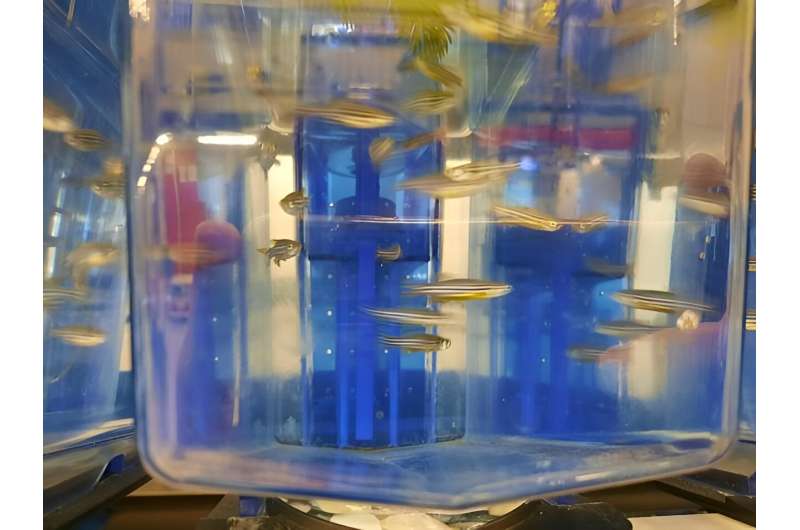This article has been reviewed according to Science X's editorial process and policies. Editors have highlighted the following attributes while ensuring the content's credibility:
fact-checked
trusted source
proofread
An easy way to make aquaculture more sustainable

Changing the way that carp are fed can substantially reduce the amount of ammonia they excrete compared to when they eat the same amount of food all at once. This finding is one of the outcomes of Wouter Mes's Ph.D. research at Radboud University.
Mes researched zebrafish and carp (the most commonly bred fish in the world) as part of his Ph.D. "We already know that zebrafish and carp use bacteria in their gills to turn toxic ammonia into harmless nitrogen gas. Rather than excreting only ammonia after they eat, they turn some of it into nitrogen gas. This process is carried out by bacteria that live in the fish's gills. But we didn't yet know how they do that and what might facilitate it."
Pushing a pendulum
The biologist looked at what happens when you change the way that the fish are fed. He researched different feeding regime and different types of food. "It turns out that the fish and the bacteria that turn the ammonia into nitrogen gas perform at an optimal level when the fish can decide for themselves when they eat."
Mes placed a pendulum in the aquariums, and when the fish swam up against the little ball at its end, they would receive a little bit of food. "It takes less than a day for the fish to figure that out. Feeding them in this way reduces the amount of ammonia in the water."
Natural biofilter
The bacteria that live in the gills of the fish act as a natural biofilter. "It appears that the bacteria perform best when they're given small portions of food to process," says Mes. "That provides a steady flow of small amounts of ammonia over the gills, and the bacteria have time to eat it and convert it into nitrogen gas."
Above that, the research from Mes and colleague Maartje van Kessel showed that these bacteria form clusters in the gills. It's possible that certain transporters in the fish work together with these bacteria clusters to send as much ammonia as possible to the bacteria. Further research is needed to confirm this, but it would be vital knowledge to understand more about the nitrogen cycle and how ammonia can be converted more efficiently.
Better for the fish
The finding could have a positive impact on aquaculture. "If you adjust the feeding times, you don't need so many expensive filters to keep the water clean," says Mes. "The natural biofilter in the fish does most of the work."
And it's also better for the fish. "Fish grow faster when they can decide for themselves how much they eat and when. We know from previous research by our department that fish have lower stress levels when they're able to choose their own feeding times. So it's better for both the fish breeders and the fish themselves."
Provided by Radboud University




















